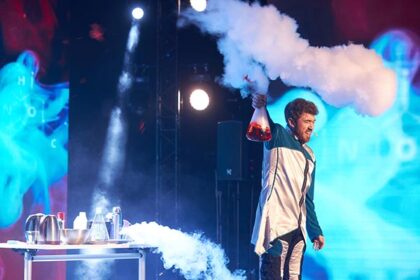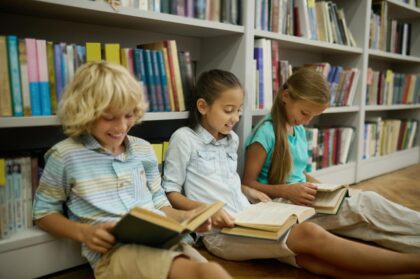Советую коллегам, учителям английского языка, на уроках уделять больше внимания формированию навыков устной речи. Для формирования данного умения необходимо использовать не только диалоги, вопросно-ответные упражнения, но и монологи с нетрадиционными заданиями как наиболее эффективный способ повышения уровня сформированности умений и навыков устной речи.
Цели урокаОбразовательные: учить беседе, формировать умение высказываться, рассуждать на иностранном языке, составлять монологическое высказывание с опорой на виртуальные туры.Развивающие: развивать чувство языка, мышление.Воспитательные: привить интерес к изучению английского языка.Оборудование: «Английский язык. Учебник для 7-9 классов». Кузовлев В.П., Лапа Н.М., Перегудова Э.Ш., Microsoft Encarta Premium 2006, Encarta Encyclopedia Deluxe 2001.Ход урокаI. Создание атмосферы иноязычного общения1. Организационный момент.Teacher: Good morning, children! How are you?Today we are going to discuss how and where you obtain information.2. Речевая зарядка.Teacher: But first answer some of my questions, please. Do you like to get more information than you know? What do you like to know about? Do you think you are very clever? Ok! Thank you very much.3. Фонетическая зарядка.Teacher: Look at the blackboard; here you can see a wisdom. Try to read and translate this wisdom. «Never put off till tomorrow what you can do today».II. Практическая работа1. Введение нового материала.Teacher: Today we will speak about unknown things around us and what helps you to get more information about the world. Today our lesson will not be typical. Today I’m going to listen to you only. Please, open your books at page 85. Here you see some pictures with boys and girls on them. These English children like to learn new things. We can see that they do it with great pleasure and interest. Tell me, please, how many methods of getting new information do you know?Pupil: I think that the best way to get new information is mass media. For example, television, radio, newspapers, internet, magazines.Pupil: But I think that it’s more interesting to get new information going to the library or to the museum. You can see everything with your own eyes.Teacher: Ok, it’s very good. I can say that I agree with both of you. But today we will speak only about libraries and museums. Please, read the first article about the library.«Come to our library and learn about the world around you. Beautiful books, textbooks, leaflets and cassettes will help you to discover, to create, to imagine, and to explore. We are waiting for you! You are welcome!»2. Составление монологического высказывания.Teacher: And now look at the blackboard; here you can see the view of Library of Congress. I think that you heard where this library is. Library of Congress is in the USA. Try to write some words with which you can describe the view of this library.Pupil: Big building, stairs, floors, columns, road, windows, books, arches, corridor, walls, ceilings, statues, chairs, tables, shelves.Teacher: And now you should use these words and tell about this library.Pupil: I see a big building with two floors. Here you can walk up the stairs. At the first floor you see three archways and at the second floor you see big columns. This building is very beautiful and I think that this building is old. On the opposite side you can see the road. The road and the building are divided through the fence. Also on the opposite side we can see The United States Capitol Building.Teacher: Ok, thank you. It’s great. You have told us about the entrance in this library. And now let’s imagine what kind of books we can find there.Pupil: I think that it may be historical, economical, political books. And of course, there are a lot of newspapers and magazines. And I think that in this library there are books in different languages.Teacher: And now let’s go to the Great Hall of Library of Congress. Who wants to describe this hall?Pupil: First, I see a big hall with the arches and columns. This hall is white. And we can see a beautiful colorful floor. I see a big picture on the floor. There are stairs to the first floor on the both sides. On one wall of the stairs we can see the bust of Thomas Jefferson and on the other we can see the bust of George Washington.Teacher: Ok, well done. Thanks. Let’s go to the upper floor. Who wants to tell us about it?Pupil: I see a great corridor with lots of double columns. Each column has its arch. The color of arches and columns is white. And, of course, I see beautiful walls and ceiling. These walls and ceiling are very colorful. There we can see black, orange, yellow, red and white colors. In addition, I can see a lot of windows. They have square and circle forms. This corridor is very light.Teacher: It’s nice. Thank you. And now we will go to the main room of this library. It’s the Main Reading Room. Who wants to describe this room?Pupil: When I am coming in it I see a big circle hall. There are a lot of desks. In front of the door we can see two statues. Maybe both of these statues are the Statues of Knowledge. Also we see the arches again. The wall near the door is decorated with angels and some titles. Here we see some chairs, tables, shelves. Let’s move on to the circle room. Here you see two floors with books. I think here we may find any books. And if you raise your head you will see a big dome. And, of course, we can see the windows in the form of arch.Teacher: Ok, excellent. Thanks. Tell me, please, what kind of information can you find in the libraries?Pupil: I think that I can find the information about the famous people, buildings; also books about animals, trees, insects; scientific, geographical, political, historical books in the libraries.Teacher: Ok. And now let’s move on to the museum. Why is it interesting to visit the museum? Who wants to read the next article?«Visit our museum! Here you can learn by playing. Explore by touching! Discover by doing! Do experiments! Come up with your ideas. Enjoy your visit!»And now look at the board; here you can see the view inside the Louvre Museum. Many of the world’s greatest works of art are housed in the Louvre Museum in Paris. Here, in one of the Louvre’s many galleries, visitors gather to look at Leonardo da Vinci’s Mona Lisa, perhaps the museum’s greatest treasure. Please, try to describe what you see.Pupil: Ok, the first I see is the picture of Mona Lisa. It’s a very impressive sight. I feel that I am here, inside the Louvre Museum. There are a lot of pictures here. We can see that this room is very big. There are pictures of different forms and colors. We can see that the walls are very high. I think that we can get here the information about different painters and their pictures. Also we can get the information about the history of these pictures. And, of course, we can enjoy the beauty of this museum.Teacher: Very good. Thank you. And our last museum for today will be the national Air and Space Museum. This museum is the Smithsonian Institution’s most popular museum. The National Air and Space Museum is the Smithsonian’s most-visited museum. Its vast collection of aircraft, spacecraft, and artifacts is the largest and most diverse of its kind in the world. Who wants to describe this museum?Pupil: The first thing I see is a big and high window. This window holds on iron sticks. The walls are too high here. Also I see some airplanes. We can see many people around an astronaut. We can see that the airplanes are hung over the floor. The hall is very vast. I think that there we can get the information about airplanes, the history about airplanes, astronauts and about the first astronauts.Teacher: Perfect! Thanks. Today you learnt to describe all you could see. I think that you liked it.3. Домашняя работа.Teacher: And now open your diaries and write down your homework. Open your books at page 86. Here you can see Exercise III. Many children spend a lot of time watching TV. They think they can learn a lot from TV programmes. Are they right? You should write which programme is interested for and why?III. Итог урокаTeacher: Tell me please, what resource to get information do you know? Thank you for the work. The lesson is over. Good bye.Прим. ред. Методические рекомендации автора по использованию на уроках виртуальных туров читайте на сайте «Учительской газеты» http://www.ug.ru/method_article/1023. Наира СЕВЯН, учитель английского языка средней школы №7 имени Ф.А.Кошевого пос. Первомайского Краснодарского края







 Выбор читателей
Выбор читателей






Комментарии